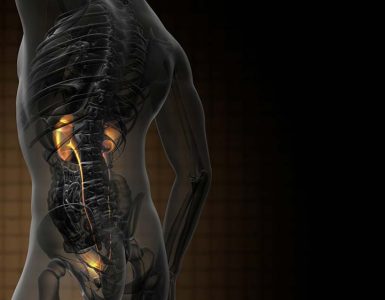Cardiovascular diseases (CVD) are the number one cause of high mortality rate all over the world. CVD are a group of disorders of the heart and blood vessels which includes myocardial infarction, stroke, coronary heart disease, cerebrovascular disease, peripheral arterial disease, rheumatic heart disease, congenital heart disease etc. Factors which play a vital role in causing CVD are hypertension, smoking, diabetes, physical inactivity, unhealthy diet, use of tobacco, dyslipidemia and obesity1.
Obesity is a potential threat worldwide which badly affects the health and is one of the main reasons for causing CVD and increasing the mortality rate2,3. Excess weight increases the heart’s work. Anthropometric measurements play a significant role in the prevention of CVD.
Anthropometric measurements commonly used in healthcare include; body mass index (BMI) and waist circumference (WC), it as an indicator of the degree of obesity estimated with height and weight and it is known to be correlated with the risk of premature death as well as diseases such as CVD. However, due to its limitation in indicating the distribution of fat, some researchers have argued against placing too much emphasis on BMI in relation to CVD. Rather, abdominal fat poses a greater risk for CVD onset and worsening than the simple ratio of height and weight4.
A body shape index (ABSI) is a new anthropometric measure which was developed by Krakauer and his colleagues5. So, a new study was carried out by researchers to investigate the potential utility of ABSI as an indicator of CVD risk and conducts a comparative analysis of ABSI, BMI and WC regarding their effects in predicting CVD risk factors in Korean middle-aged and older adults4.
The study results showed that ABSI, BMI and WC predicted blood lipid levels, blood pressure and fasting blood glucose in Korean middle-aged and older adults. Specifically, for both men and women, waist circumference significantly predicted triglycerides and BMI and ABSI significantly predicted blood pressure.
WC had a significant association with triglyceride and fasting blood glucose increment in middle-aged and older adults. It was also found to be significantly related with HDL cholesterol reduction in women.
It was verified that ABSI, BMI and WC have significant relationships with blood lipid levels, blood pressure and fasting blood glucose in middle-aged and older adults. Based on the study results, it is expected to inform the efforts for managing CVD, a major cause of death worldwide. However, each anthropometric factor showed differences in regard to their impacts on the CVD risk factors. Therefore, it is suggested that healthcare professionals should not rely on a single anthropometric measurement in CVD risk management.
Keywords: ABSI, BMI, waist circumference, blood lipids, blood glucose, blood pressure, blood glucose, healthcare professionals, anthropometric factor, cardio vascular disease, CVD risk management.
References:
- Mendis, S., P. Puska and B. Norrving, 2011. Global Atlas on Cardiovascular Disease Prevention and Control. 1st Edn., World Health Organization, Geneva, ISBN-13: 9789241564373, pp: 3-18.
https://www.cabdirect.org/cabdirect/abstract/20123402600 - Bray GA, Kim KK, Wilding JPH World Obesity Federation. Obesity: a chronic relapsing progressive disease process. A position statement of the World Obesity Federation. Obes Rev. 2017;18:715–723.
10.1111/obr.12551 - Van Putte-Katier N, Rooman RP, Haas L, Verhulst SL, Desager KN, Ramet J, et al. Early cardiac abnormalities in obese children: importance of obesity per se versus associated cardiovascular risk factors. Pediatr Res. 2008; 64:205-209.
https://10.1203/PDR.0b013e318176182b - Cerhan, J.R., S.C. Moore, E.J. Jacobs, C.M. Kitahara and P.S. Rosenberg et al., 2014. A pooled analysis of waist circumference and mortality in 650,000 adults. Mayo Clin. Proc., 89: 335-345.
https://doi.org/10.1016/j.mayocp.2013.11.011 - Krakauer, N.Y. and J.C. Krakauer, 2012. A new body shape index predicts mortality hazard independently of body mass index. PLoS One, Vol. 7, No. 7. 10.1371/journal.pone.0039504
https://doi.org/10.1371/journal.pone.0039504
















Add comment